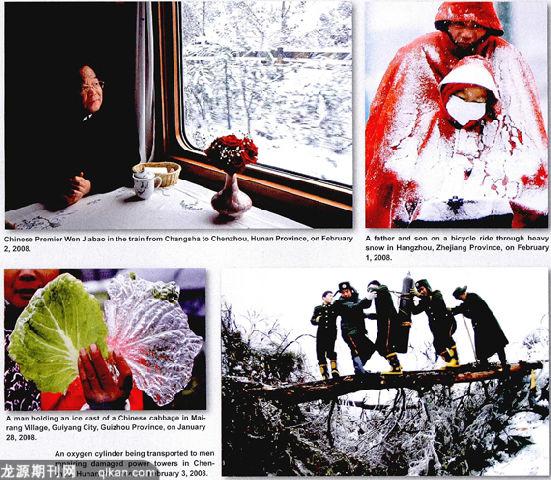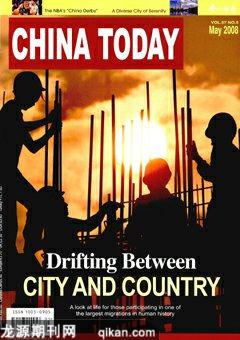Stories of Disaster Relief Told in Images
staff reporter ZHANG XIWEN
DURING a break between meetings on the train from Hunans Changsha to Chenzhou on February 2, 2008, Xinhua News photographer Yao Dawei took the opportunity to photograph Premier Wen Jiabao, who was touring snow-hit southern China earlier this year. “I saw the Premier sitting motionless by the window, a cup of tea on the table in front of him,” recalls Yao. “The train was speeding across a territory of ice and snow, trees laden with thick snow and ice cones, and now and then devastated iron transmission towers in the distance jumped into view. The latest weather report said that the sleet and snow would continue for several days across a greater part of southern China. Premier Wen looked solemn, his eyebrows knit and his eyes calm and resolute. His hands were cupped in front of him, and his eyes conveyed tenacity and strength. I was moved by his appearance, and snapped a shot.”
Yao Dawei followed Premier Wen over the entire course of his trip to the south. His image of Premier Wen in his compartment now graces Facing the Cold, a photo album that records these events by a range of amateur and professional photographers.
Beginning on January 10, southern China was hit by four spells of sleet and snow over a period of nearly two months. The bad weather paralyzed road and rail traffic, with more than 10,000 vehicles trapped for days on the Hunan section of the Beijing-Zhuhai Expressway, and at least 136 trains delayed mid-journey. The number of passengers stuck at Guangzhou Railway Station and passenger terminals around the area increased by 100,000 a day during the worst period.
The sleet and snow also brought down high-voltage power lines, crippling the power grids of Guizhou, Hunan and Jiangxi, forcing millions of people to live by candle light and kerosene stoves for days or even weeks. In Hubei Province, 100,000 residents had no access to drinking water for days, while in some mountainous areas, supplying basic necessities like food, water and winter clothing became a serious problem. The Chinese government dispatched large numbers of troops and relief materials to the disaster-stricken areas, and Premier Wen Jiabao made three trips to these areas within nine days.

As a photographer, Yao Dawei said he was lucky to be part of the Premiers entourage. “I witnessed his deep concern, saw him bowing – tears in his eyes – to the families of the heroes who died fighting the snow, and doing his best to console local residents despite his fatigue after days of traveling. I also saw him climbing treacherous icy mountain slopes to extend his personal regards to relief workers.”
Yao Dawei recorded many of these scenes. Numerous other photographers also recorded what happened around them during the natural disaster. Many of their photos were published on Asianewsphoto.com. Wang Wenlan, assistant to the editor-in-chief of China Daily and director of Asianewsphoto.com, selected 222 photos by 133 photographers in his role as chief editor of Facing the Cold.
A range of affecting moments have been immortalized in the albums pages. There is President Hu Jintao at a relief material transport site, and Premier Wens deep meditation in the face of devastation. Power grid rescue workers can be seen swallowing ice and snow to relieve their hunger and thirst. There are Chenzhou citizens mourning three electricians who died while repairing the power grid. There are ordinary people doing extraordinary things, like carrying a sick passenger hand-over-hand atop a solid wall of people to a safe place at the crammed Guangzhou Railway Station, a wedding taking place on a trapped bus, and soldiers clearing ice-encrusted roads. Finally, there are helpless truck drivers stuck in immobilized traffic.
“Though the album cannot present all of what went on, the many small, touching incidents the photographers recorded can realistically convey to people something of what happened this past winter,” says Wang Wenlan.

